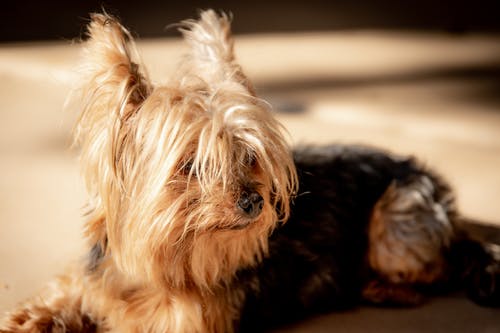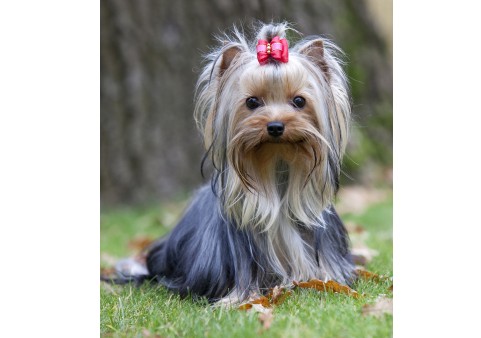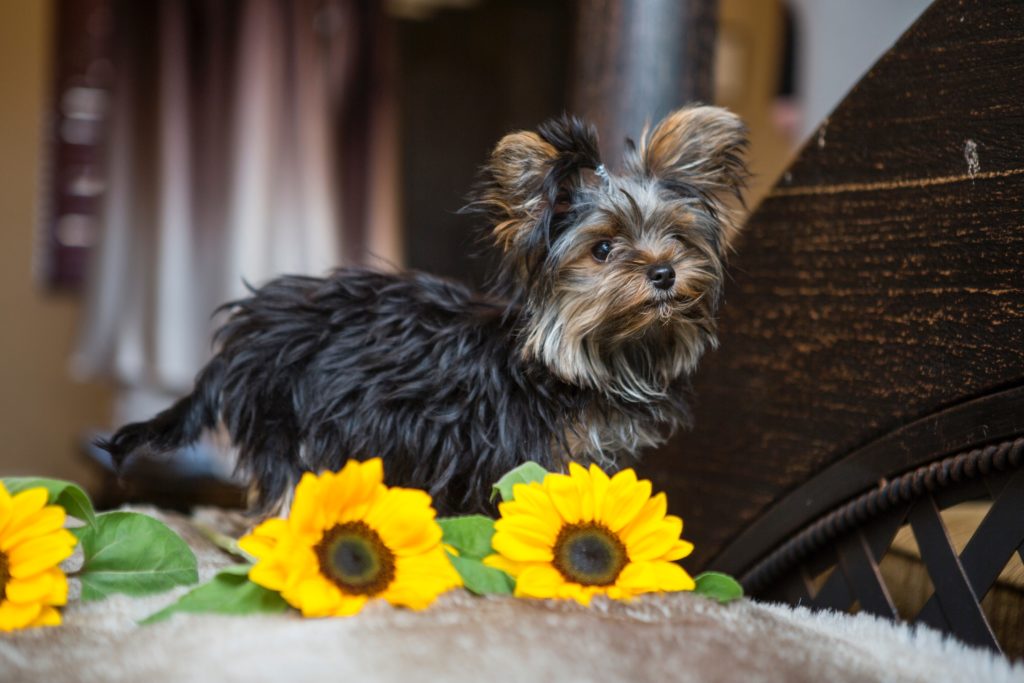Yorkie Stats
GROUP: TOY
WEIGHT: 4 TO 6 LBS (1.8-2.7KG)
HEIGHT: 20-23CM (8 TO 9 INCHES) TALL AT THE SHOULDER
LIFESPAN: 12 TO 15 YEARS
The “Yorkie” is an intelligent active dog breed that conveys an air of importance. The Yorkshire Terrier loves attention and is very loyal.
Although not currently on the list of best family dogs for 2020, Yorkshire Terriers have been included on previous lists. They continue to be a beautiful dog that is adaptable to apartment living and loves to be the center of attention! They have high grooming needs, but require mild to moderate exercise daily. They generally do great with other pets and children when raised together. The Yorkshire Terrier is a beautiful, but forgotten family dog.
Why “Yorkies” Make Good Family Dogs
For people with older children. The “Yorkie” is an intelligent active dog breed that conveys an air of importance. The Yorkshire Terrier loves attention and is very loyal.
The Yorkshire Terrier does not have the typical soft temperament seen in most lapdogs. This breed is bold and excitable. The Yorkshire Terrier is very brave and makes a good watch dog.
This dog can be very affectionate with it’s family. It is not impossible to raise young children and a Yorkie successfully, but a Yorkie can become easily overwhelmed by loud voices and quick movement and may become aggressive as a defence. Young children may accidentally roll over, step on or drop the small dog causing the dog serious injury.

Where did The Yorkshire Terrier Come From?
The Yorkshire Terrier originated in Yorkshire and Lancashire, northern England. In the mid-nineteenth century many people arrived from Scotland to England to find work and they brought several varieties of small terrier dogs with them.
They bred the dogs together and out of all the breeding was one very successful new breed which came to be known as the Yorkshire Terrier. Instantly popular because of it’s size, character and coloring.
Yorkies today, originated from two of three possible parents. A male named Old Crab and a female named Kitty, or a third female dog whose name was not well documented and is now lost.
In 1860 a prize male stud named Huddersfield Ben was the most desired Yorkie for breeding. He became famous because of his great poise and obedience, he was what people wanted the Yorkie to represent. His puppies define the breed the way we know it today. But only one of his puppies carried on the legendary recognition of his father gaining such prize and acclaim in the show world. The name of Huddersfield Ben’s puppy was Mozart.
Huddersfield Ben was a champion before the Yorkshire Terrier was introduced the United States. The breed was recognized by the American Kennel Club in 1878, making the Yorkie, one of the first 25 breeds to ever be recognized in the establishment of the club. The Americans liked the Yorkie because of it’s popularity with the English, and America held Victorian customs in high regard at the time.
Yorkshire Terrier Health Promotion
The Yorkshire Terrier can be pre-disposed to some health risks common to the breed. Not every dog will have these health problems, that is why it is crucial to follow up with a veterinarian to find out the overall health of the puppy or dog you get. Many breeders will be able to inform you on what health problems the puppies will be pre-disposed to based on the health of their parents and should be testing the puppies to treat and avoid any issues. The Yorkshire Terrier can have the following health issues either inherited from birth, or acquired through the natural aging process.
- Distichea (Misplaced eyelash). The eyelash usually grows wrong and can cause constant irritation and tearing of the dogs eye. Usually treatable through manual removal, electrolysis or surgery.
- Hypoplasia of dens (Malformation of the vertebrae) causes pain, but can be treated by having the dog wear a brace for several months and surgery if needed. The treatments may not be totally effective though, and surgery comes with huge warnings for these little dogs because of their small size.
- Legg-Calve-Pethes Syndrome (Degeneration of the femur bone), treatment requires surgery.
- Luxating Patellas (sliding knee cap), can be painful and is also treated by surgery.
- Portosystemic shunt is (Malformation if the portal vein which is a major vessel to bring blood to the dog’s liver), where it is detoxified of impurities, similar to the human circulatory system. Only since the system is not functioning properly in dogs with portosystemic shunt the “dirty” blood continues to circulate around the heart, brain and all other major organs. This can be corrected through surgery.
- Tracheal collapse (progressive weakening of the walls around the trachea). As a result, the dog usually starts to get a cough that sounds like a “goose honk”. The Vet can often prescribe cough medication and medications to help open up the lungs to make breathing more effective. However, in later stages, surgery may be the only option.
- Hypoglycemia (Low blood sugar levels). Probably because this small energetic do has a high metabolism rate, it is best to have a consistent energy source. Most veterinarians would probably recommend feeding two small meals a day instead of one bigger meal.
Building a good relationship with your veterinarian over time is essential to your dogs health and longevity, regardless of breed. I recommend annual visits even when there is nothing obviously wrong with your dog, just to promote the dog’s health. Prevention is always better than having to undergo treatment when available.
Why Are Yorkie’s Becoming a “Forgotten” Breed?
Good question, can you think of the last time you saw a Yorkie? I can only speculate on my own experience here. But it seems to me like high-end show dog status breeds are becoming less popular these days. The days of people paying high-price for high-status dogs are quickly fading.
I think this new generation of dog owners are not about high-end dogs and reputation. They are about openness, authenticity and acceptance. They are about the challenges and unique experience that comes with saving a sheltered dog, or adopting older dogs to assist them on their end-of-life journey. They are about living in the present and trying to create a lived experience that complements their current way of life. The “Yorkie”with the high-end hair cuts and reputation just does not fit into the minimalist, simple – but ENJOYABLE life philosophy of the current generation.

Current Yorkie Fashion
Back to basics, natural, a real love-you-as-you-are and where-meant-to-be fashion trend

Previous Yorkie Fashion
Denotes that this dog is of high-fashion, high maintenance and only for those that could afford luxury trends
What do you think?


